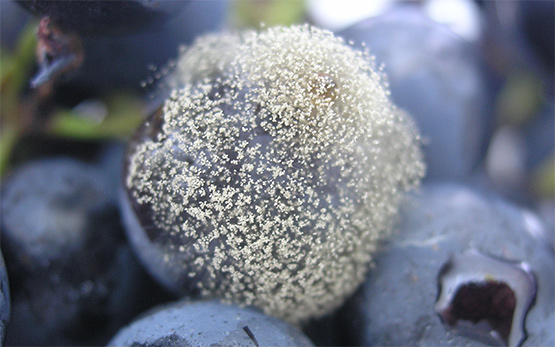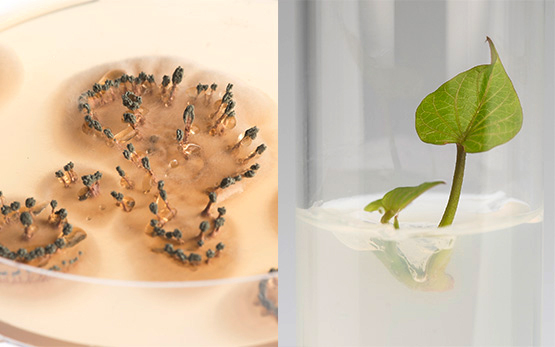Diagnostics and Information
The identification of fungal pathogens is crucial for defining an appropriate control strategy. We regularly receive a large number of requests for information on traditional and emerging crops. Essential for our partners, these diagnostics require our expertise and scientific support.
Epidemiology and Aetiology
A description of the fungal community associated with the host plant is essential for understanding both the balance between a fungus and its host and the manner in which the disease develops. This characterisation and the diagnosis imply the development of molecular tools allowing us to quantify the presence of a pathogenic fungus, to monitor its development within the plant, and to identify its potential hosts.
Tools for Decision-Making and Risk-Forecasting
The control of fungal diseases is linked to the application of fungicides at more-or-less regular intervals. The study of the conditions required for the development of the pathogens allows us to model the epidemic with a view to applying fungicides at the right time. Agrometeo is a platform bringing together microclimate data, decision-making tools, and information for improved phytosanitary control.
Fungicides : Control Strategies, Application Techniques and Resistance
The efficiency of fungicidal control is based on a good knowledge of the active substances, precise dosage, and a good application technique, particularly within the framework of fungicide authorisation. Over- or under-dosage of fungicides can have consequences for the quality of protection and for the environment, and may increase the risks of pathogen resistance or residues in the finished product.
Varietal Sensitivity and Selection Assistance
Over the course of evolution, plants have developed natural mechanisms for resisting infections. Utilising these resistance mechanisms allows us to avoid or reduce use of fungicides, thereby contributing to the protection of the environment whilst ensuring a high-quality harvest. These mechanisms can be incorporated at the creation or varietal-study level.
Metabolomics
The metabolome consists of the set of metabolites contained in an organism in a given situation and at a given time. This set of molecules is the result of complex interactions between the proteome and genome of the organism and its environment. The comparison of metabolic footprints allows us to identify the main changes occurring in case of stress. This method also permits the discovery of new bioactive molecules.







